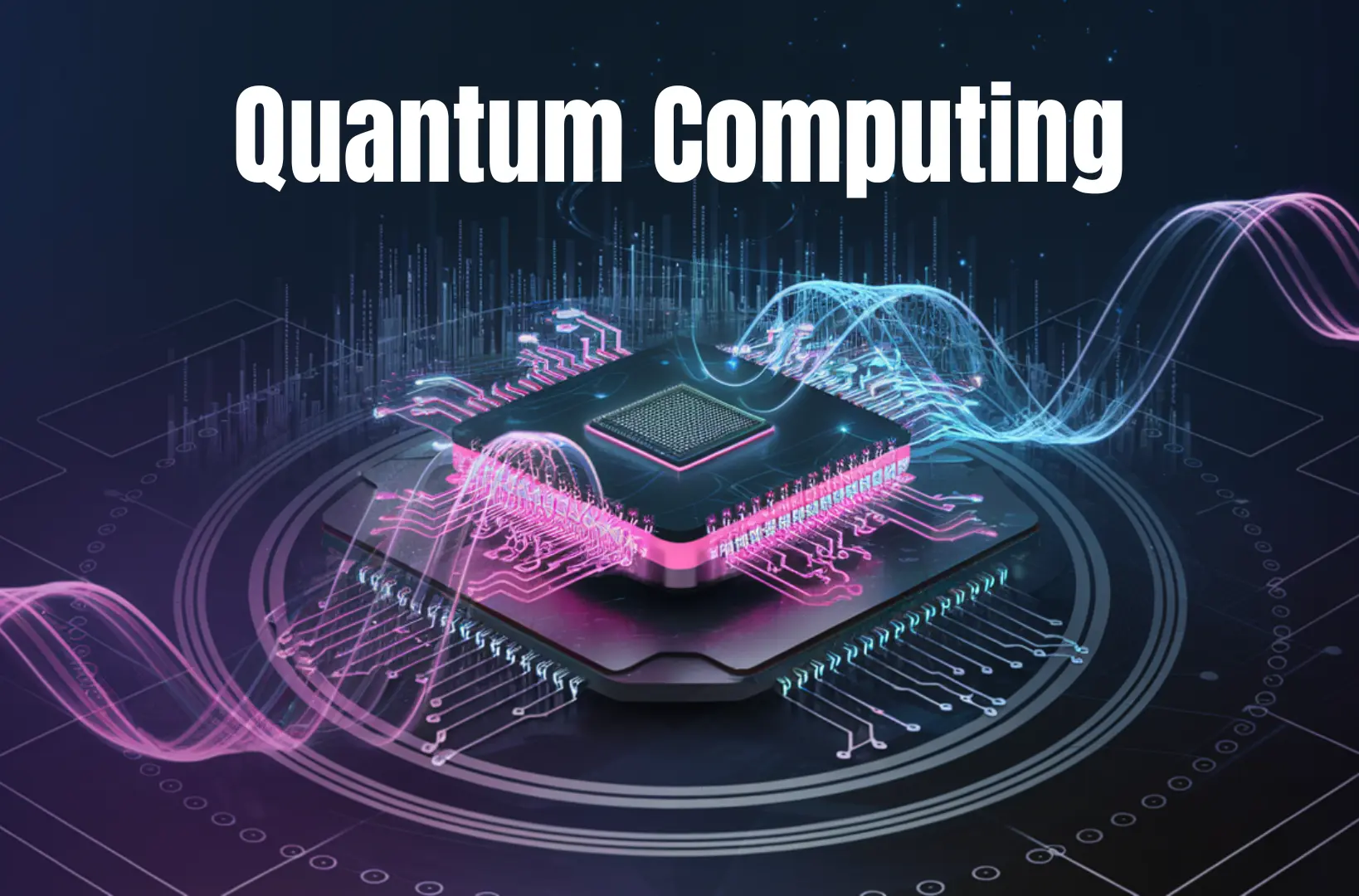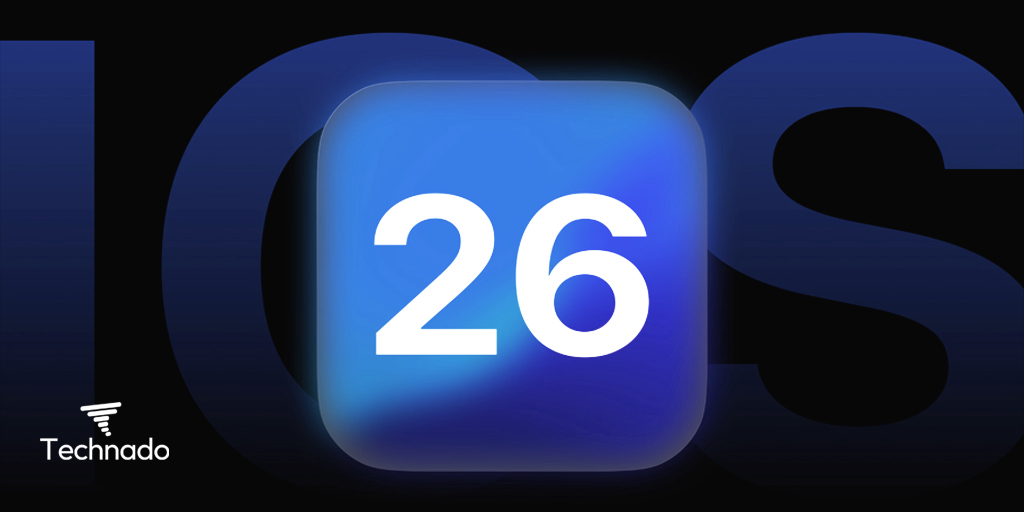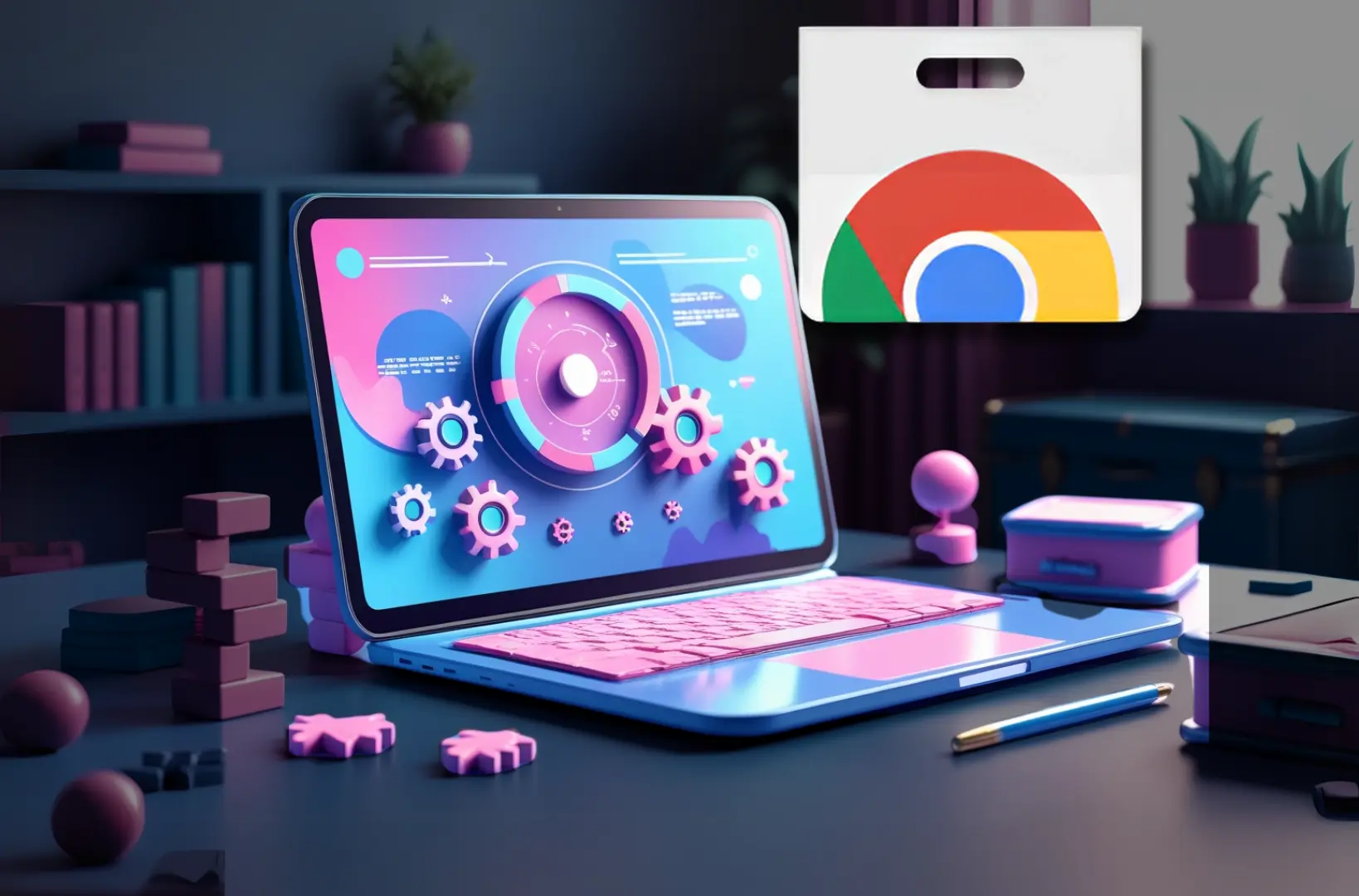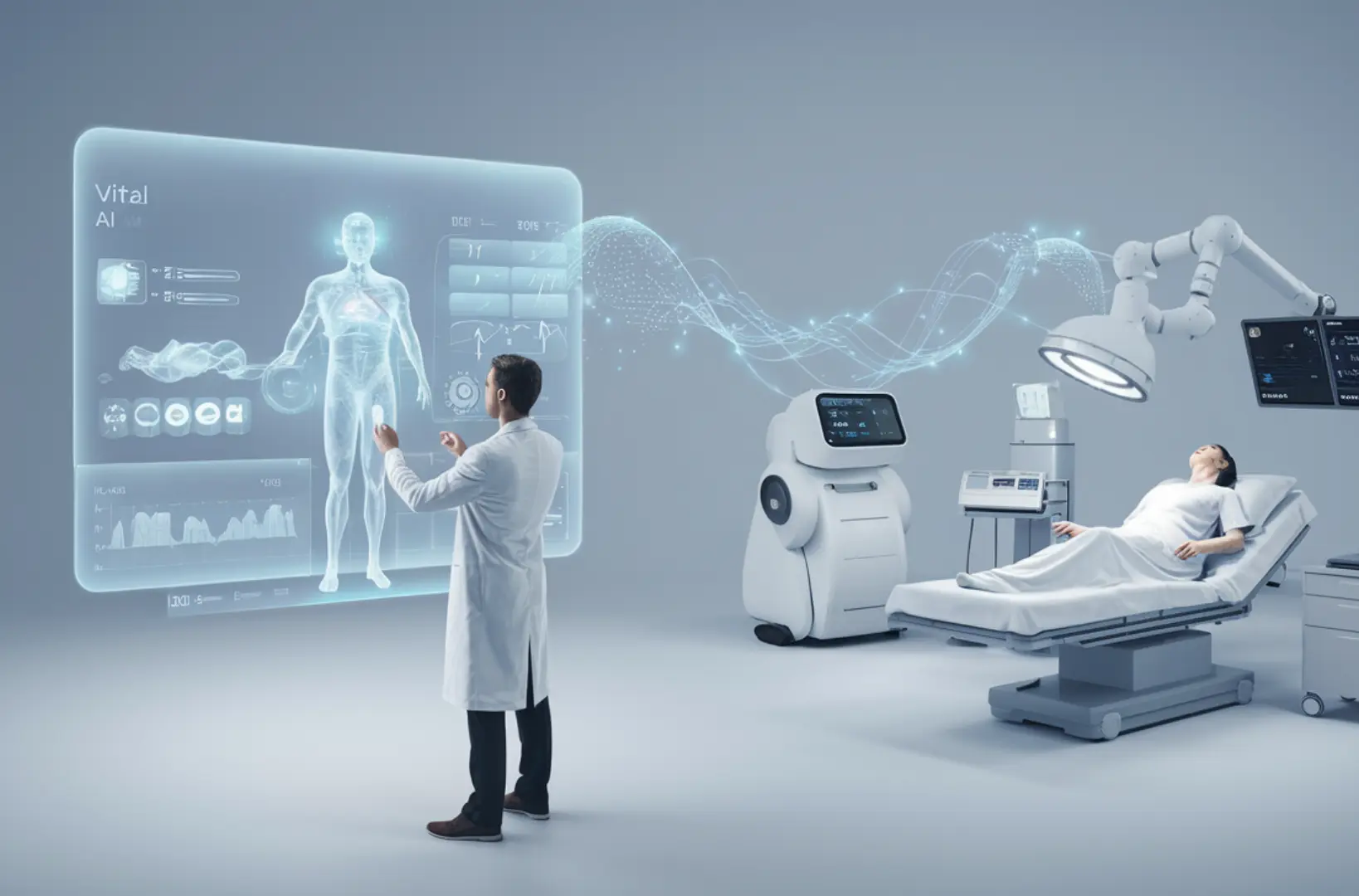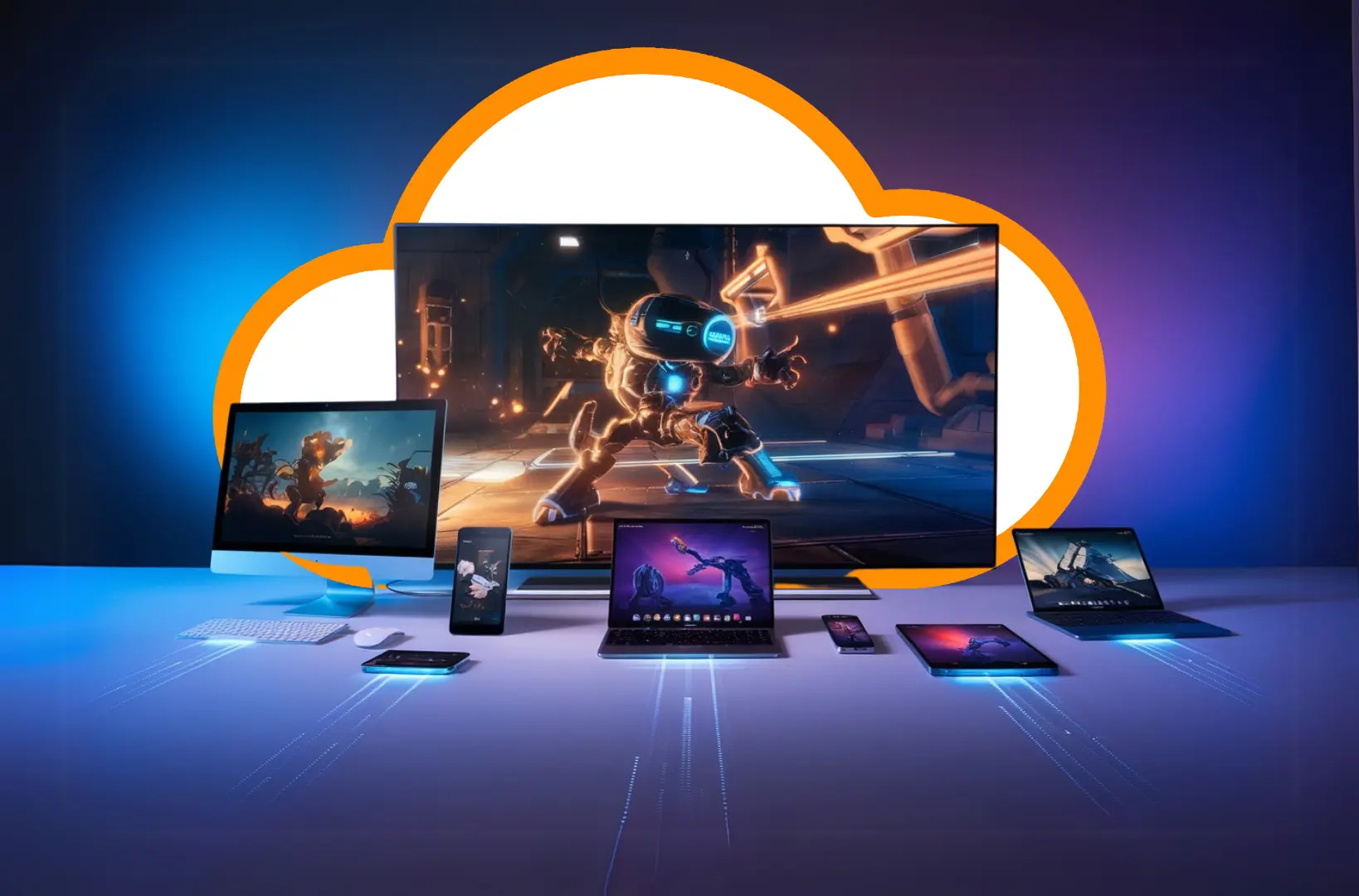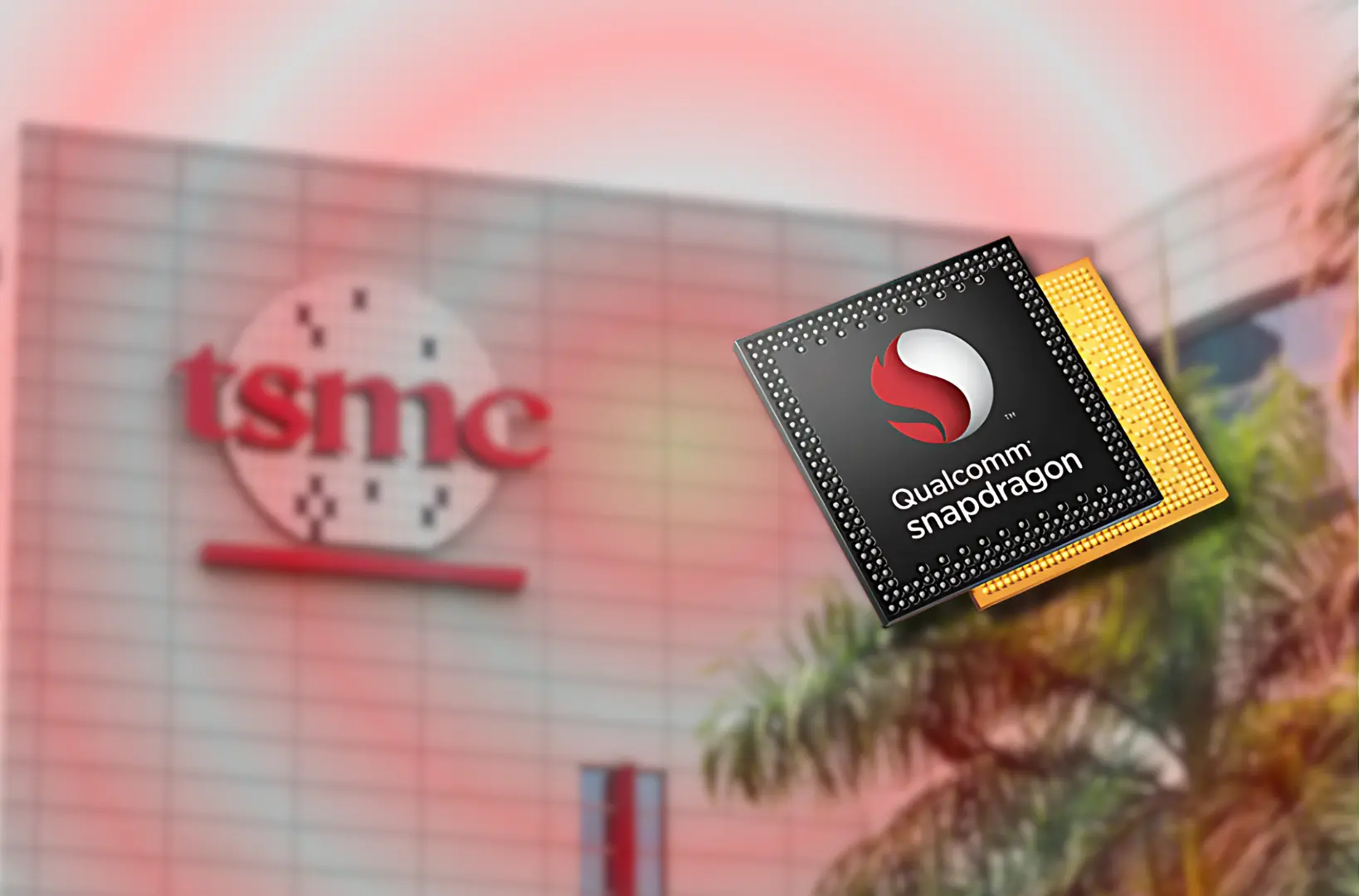Imagine a computer that can solve in minutes what would take today’s supercomputers hundreds of years. This is the promise of quantum computing. By leveraging the unique properties of quantum mechanics, quantum computers can perform calculations at speeds and scales previously unimaginable.
This article will provide a beginner’s introduction to quantum computing, explaining how it differs from classical computing and its potential applications across various fields.
Early Computers
The abacus and slide rule were also some of the first tools that were used to solve calculations faster than using paper. The electricity brought in more innovations that led to the development of binary switches called transistors. The best way to look at a transistor is to picture a light switch. When the switch is on, power is allowed to flow and the light is on. When the switch is off, there is no power and therefore no light. Traditional or classical computers work by using an array of transistors to determine the voltage and thus whether the voltage is high or low and then assigning a binary or dualistic value of 1 or 0 to it (in other words, is the light on or off?). This value of 1 or 0 is called a bit, or a binary digit. A set of eight 1s or 0s is capable of representing 256 possible values. These values are usually converted to human readable characters using some coding scheme such as the UTF-8 encoding systems used by most computers today. For instance, the binary equivalent of ‘A’ in UTF-8 is 01000001.
The size of the array of bits is directly proportional to the size of the workload that a processor can handle. Data is moved from the long-term storage on the disks through a bus and is placed in different caches before it can be passed to the processor and calculated. This data movement and computation is occurring billions of times per second for every modern processor in the market.
The use of transistors instead of slide rules and paper was not only a technological improvement that enhanced the calculation speed but also a revolutionary step that led to the development of new sciences and had a significant impact on society in general
Modern Computer Basics
Today’s typical classical computer is a collection of buses, caches, and processors that serve to store, move, and calculate data. Each processing unit or core of a processor works on data and moves through the data at speeds as often as possible while also adhering to the sequential order. Buses and processors are added to increase the number of calculations that can be done in parallel. Nevertheless, there are still limitations to how quickly large complexes of computers can solve complex problems. For instance, to break the strongest encryption systems today it is said to take hundreds of years even for the best modern classical computers. Similarly, although it may perform billions of calculations per second, each processor core can only perform one calculation at a time. After we learn how modern high-performance classical systems function, we will then learn how quantum computers function differently.
Quantum Computers
Whereas simple calculations are performed very quickly by classical computers, quantum computers rely on the physics of the entangled state of quantum objects to perform logarithmically more calculations without requiring many parallel processors. Thus, what could have taken hundreds of years to calculate can be determined in minutes. We will discuss quantum objects and the entangled state in the next section. In this section, we will only understand that a quantum computer does not only perform calculations faster (which is potentially about 160 million times faster than today’s supercomputers) based on the type of problem to be solved but, more importantly, quantum computing performs the calculation of an answer in an entirely new way.
What Is Quantum Computing?
Quantum computers are developed using subatomic particles like electrons and photons as a means of representing computation. Quantum computers are not the next iteration of supercomputers – instead, they represent the first fundamentally new type of computing since humans discovered the classical computers. Quantum computers are programmable and can solve some problems which are almost incomparable to the capacity of the most powerful supercomputers.
The power comes from the fact that the basic unit of information in a quantum computer, the qubit, can be put in a state of Superposition where it can be in both 0 and 1 state at the same time. Another remarkable feature of the qubit is Entanglement for which the 2022 Nobel Prize in Physics was awarded. Entanglement is the ability to “link” or correlate the qubits such that when one is measured, the other is as well. This means that any computation between entangled qubits can occur practically instantaneously. The more entangled bits, the more calculations that can be done as well. Moreover, quantum systems are not just faster computers. They also provide or demonstrate a probability of an answer in a special way.
The technical leaders may be interested in how they can apply or apply this exponent and different computational power that is likely to change technology and even society as much or even more than the semiconductor.
How Does Quantum Computing Work?
As we know, quantum computers are also programmable and use the same programming languages as classical computers; they are written in a number of quantum languages that are either libraries or extensions of Python, even though the major components like the cache or memory of a classical computer have not been built for quantum systems.
Quantum computers work differently than their classical counterparts. They employ quantum mechanical phenomena to solve certain kinds of problems more quickly than with conventional computers. The world of quantum (subatomic particles) is governed by completely different laws and these particles behave very differently from those in the world we live in. Quantum computing uses subatomic particles like electrons or photons. A qubit, a quantum bit, can be in superposition, which means it can be in more than one state at the same time, both 1 and 0. Also, it is possible to prepare these qubits in such a way that they become entangled, that is they enter into a quantum correlation in which measuring one is enough to determine the result of measuring the other.
Differences Between Quantum and Classical Computers
| Quantum Computers | Classical Computers |
| Calculate with qubits, which can be both 0 and 1 at the same time | Calculates with bits, which can be either 0 or 1 |
| Computing power increases exponentially in proportion to the number of qubits | Computing power increases linearly with the number of transistors |
| Has high error rates | Has low error rates |
| Ultracold temperatures necessary for working | Works at room temperature |
| Well-suited for simulation, optimization, and artificial intelligence tasks | Well-suited for everyday tasks like accounting, word processing, video editing, etc. |
| Quantum Volume has been doubling every year since 2017. Quantum Volume is a measure that combines the number of qubits and the errors and in a sense measures the computing power of quantum computers. | Since 1975, following Moore’s law, the number of transistors has been doubling every 2 years. This though is expected to slow down as transistor miniaturization reaches atomic levels. Moore’s law indicates how the computing power of classical computers increases exponentially. |
Timeline of Quantum Computing Algorithms Milestones
Over the past few decades, several advances have been made in terms of quantum algorithms that show exponential or quadratic speedups. These algorithms have demonstrated that indeed quantum computing can solve certain problems much faster than classical computers and, in fact, they could even tackle some problems that will never be possible to implement on a classical computer.
| Key Milestones | Details |
| 1981: Richard Feynman urges the world to build a quantum computer | Feynman proposes a framework for simulating the evolution of quantum systems. Feynman urges, “Nature isn’t classical…and if you want to make a simulation of nature, you’d better make it quantum mechanical…” |
| 1992: Deutsch-Jozsa Algorithm | The Deutsch–Jozsa algorithm is a deterministic quantum algorithm and was the first proposed quantum algorithm with exponential speedup. David Deutsch and Richard Jozsa proposed it and showed that there can be advantages to using a quantum computer as a computational tool for a specific problem. It inspired other quantum algorithms that followed. |
| 1994: Shor’s Algorithm | Peter Shor discovered an algorithm to factor large integers exponentially much faster than the best-known classical algorithm. Shor’s Algorithm can theoretically break many of the public-key cryptography systems in use today. Shor’s Algorithm demonstrated that a quantum algorithm would do factorization in a few hours, which would take several billion years for a classical computer. This paved the way for more intensive research to look for other problems where quantum computers could provide huge speedups. |
| 1996: Grover’s Algorithm (also called the Quantum Search Algorithm) | Lov Grover discovered an algorithm that provides quadratic speedup for finding one specific element in an unstructured dataset. For large unstructured datasets, Grover’s algorithm provides substantial savings in search time. |
| 2014: Variational Quantum Eigensolver (VQE) | VQE is a quantum algorithm for quantum chemistry, quantum simulations, and optimization problems. It is a hybrid algorithm that uses both classical computers and quantum computers to find the ground state of a given physical system. VQE is one of the most promising near-term applications for quantum computing. It was developed by Alberto Peruzzo, Jarrod McClean, Peter Shadbolt, Man-Hong Yung, Xiao-Qi Zhou, Peter J. Love, Alán Aspuru-Guzik, and Jeremy L. O’Brien. |
| 2014: Quantum Approximate Optimization Algorithm (QAOA) | QAOA can be regarded as an application of VQE to solve combinatorial optimization problems on near-term quantum computers. The applications of QAOA are broad and far-reaching, and the algorithm’s performance is of great interest to the quantum computing research community. |
| 2014: Quantum Approximate Optimization Algorithm (QAOA) | QAOA can be regarded as an application of VQE to solve combinatorial optimization problems on near-term quantum computers. The applications of QAOA are broad and far-reaching, and the algorithm’s performance is of great interest to the quantum computing research community. |
| 2022: Quantum becomes mainstream in business applications | Building on the algorithms above, machine learning, optimization, and simulation are being applied to applications in areas like finance, retail, supply chain, automotive, and others. Businesses have begun exploring quantum computing and applying it to various business problems.SimulationPharma – Protein foldingChemistry – Material science and discoveryElectric Vehicle – Battery performanceFinance – Risk ModelingOptimizationSupply Chain – Route optimizationPharma – Drug performanceFinance – Portfolio optimizationAutomotive – Design optimizationArtificial IntelligenceHealthcare – Disease diagnosisAutomotive – Computer visionFinance – Credit card fraudSupply Chain – Clustering |
Timeline of Quantum Computing Hardware and Software Milestones
How do we implement quantum algorithms? We need quantum systems to run quantum algorithms. Quantum systems have been growing exponentially over the past few years. Several advances have been made to demonstrate and implement quantum algorithms in practical settings. The availability of quantum computers has also prompted the industry to start looking for business use cases that can be implemented on these systems.
| Key Milestones | Details |
| 1981: Richard Feynman urges the world to build a quantum computer | Feynman proposes a framework for simulating the evolution of quantum systems. Feynman urges, “Nature isn’t classical…and if you want to make a simulation of nature, you’d better make it quantum mechanical…” |
| 1996: DiVincenzo’s criteria | David P. DiVincenzo, from IBM, proposes a list of minimal requirements for creating a quantum computer. |
| 1998: NMR Quantum Computer | First experimental demonstration of a quantum algorithm. A working 2-qubit NMR quantum computer is used to solve Deutsch’s problem by Jonathan A. Jones and Michele Mosca at Oxford University and shortly after by Isaac L. Chuang at IBM’s Almaden Research Center and Mark Kubinec at the University of California, Berkeley together with coworkers at Stanford University and MIT. |
| 2001: Physical implementation of key quantum algorithm using quantum mechanics | First execution of Shor’s algorithm at IBM’s Almaden Research Center and Stanford University. The number 15 was factored in using 1018 identical molecules, each containing seven active nuclear spins. |
| 2011: Quantum Annealing Computer Commercially Available | D-Wave developed quantum annealing and introduced their product called D-Wave One. This was the first commercially available quantum computer. |
| 2016: Quantum Computer accessible over the cloud | IBM Quantum Lab enables cloud-based quantum computing. IBM provides an online interface to their superconducting systems. The system is immediately used to publish new protocols in quantum information processing. |
| 2017: Qiskit Software Development Kit released | Qiskit was founded by IBM Research to allow software development for their cloud quantum computing service, IBM Quantum Lab. The primary version of Qiskit uses the Python programming language. |
| 2019: Quantum Supremacy Experiment | Google claimed quantum supremacy using their quantum computer. Using a 53-qubit processor, they demonstrated that they could sample one instance of a quantum circuit a million times in just 200 seconds, a task that would take 10,000 years on the best supercomputers. This claim was disputed by IBM, but still, it remains one of the most interesting experiments to show gains on actual quantum computers. |
| 2022: IBM launches 433-qubit Quantum Computer | IBM, which published its roadmap in 2020, has been on track so far and plans to deliver a 4000+ qubit quantum computer by 2025. |
Quantum Computing Providers
There are already several providers who sell access to quantum computers, and as the technology improves more may enter the field:
- Amazon Bracket
- Annealing Cloud Web
- Atom Computing
- Azure Quantum
- AQT
- Baidu
- Bleximo
- ColdQuanta
- D-Wave Systems
- Honeywell Quantum Solutions
- IBM Quantum Computing
- IonQ
- IQM Quantum Computers
- Qutech Quantum Inspire
- Quantinuum
- Rigetti Computing
- Xanadu
In addition to individual cloud providers, platforms such as Strangeworks act as consolidation services.
Building A Private Quantum Computer
Quantum computers, which are proprietary systems, have not been developed rapidly due to their high costs, complexity, and the secrecy surrounding them. Building the necessary equipment typically requires billions of dollars in investment. However, this amount is expected to decrease as technology improves, similar to the evolution of classical computers.
Hybrid Systems
Because of the cost and complexity of quantum computing, many will use conventional computers to handle most of the computation and only pass certain calculations to a quantum computer if they can be done more efficiently. This could enable quantum computing to take advantage of quantum computing while only paying for quantum resources when needed. This could be on-premises quantum computers or providers like Quantum as a Service.
Use-Cases
Financial Services Use Cases for Quantum Computing
- Close Investment Risk Analysis
Risk and liability are dominant issues that any investment should consider for business or government. Due diligence is understood to involve not only an assessment of the current status of the project that is being invested in but also of the future economic environment. The rates, the prices of the shares, the exchange rate, and many other factors that are influenced by the general level of economic development are all factors that are considered when making decisions on whether to invest or not. Most of the time, the decisions are made without full understanding or modeling as classical computers would take too much time to analyze all the parameters that are constantly changing. As for quantum computing, the data set is large, and the environment is changing rapidly, which can be incorporated into the analysis to a degree that enables an agile business decision. In leveraged environments where valuations may be based on other leveraged instruments, the constant re-evaluation of the value of current investments allows for exiting an investment before the value is lost.
- Close Insurance
This is what makes insurance work – knowing the level of risk. Actuaries are always coming up with new and improved tables as the population of the insurance market and other data change. Quantum computing is a new technology that can deal with several interacting and variable factors that can help the insurance service providers to understand the risk and, hence, the rates.
- Close Fraud and Offer Recommendations
Balancing portfolios and discovering fraud take a massive amount of computing resources, and often delay important decisions because of the time required for the dataset to be handled by classical computers. With quantum computing, even massive datasets can be evaluated in seconds or minutes, allowing for quick response to a changing environment, and avoiding further loss to fraud or market manipulation.
Quantum Computing and Manufacturing
- Close New Material Discovery
Finding new materials requires a large amount of computing power and time. With quantum computing, both would be greatly minimized, as well as being able to handle and interpret a greater number of factors for each material. New materials may require electron integral calculation, optimization of coefficients, and inversion of matrices. All of this can be done via computer simulation, saving time and money, avoiding known false configurations, and focusing on only those materials which pass an in-depth simulation.
- Close Fabrication Optimization
From airplanes to tractors, vehicles need to handle the workload required while being as light and strong as possible to save weight and fuel. As a result, each item, out of thousands or millions, needs to be designed and fabricated in an optimal manner, with extra durability built-in for the unknown. Using simulations and quantum computing, the extra amount of durability could be lessened, leading to lighter and more efficient vehicles that are also safer to operate.
- Close Supply Chain
While a supply chain is often considered a logistical concern, there is also a consideration on the manufacturing level. Currently, most providers keep a larger than necessary supply of components, as well as finished products to be sure to meet demand. As some components may take much longer than others to create, there becomes an abundance of materials waiting to be used. With quantum computing, an understanding of which items need to be made in a particular order so that they arrive ready to use at the same time, and integration with the availability of the assembly or further fabrication could save 30% or more on time and overhead.
Quantum Computing and Healthcare
Modern healthcare relies on computing power to assist with the diagnostics of illness, understand or customize medicine for individuals, plan for equipment and materials, and even assist with the optimization of insurance rates and pricing. With quantum speedup, diagnostics and treatment can be improved and accelerated, leading to healthier patients.
- Close Advanced Accelerated Diagnosis
Early and accurate diagnosis is essential to improving patient outcomes and lowering treatment costs. Quantum-enhanced machine learning can improve and accelerate medical image scans. Genomic Analysis also requires the handling of massive incongruent datasets compared against an individual’s particular genome. As more data is added, preemptive treatment becomes possible, further increasing patient outcomes and lowering treatment costs.
- Close Treatment Discovery
New drugs take billions of dollars to bring to market, along with years of research and testing. Quantum speedup will allow for millions of times faster simulations, as well as more comprehensive interpretations of organic systems. This will lead to less expensive drugs, brought to market faster, with fewer unwanted side effects.
Quantum Computing and Mineral Exploration
- Close Drilling Locations
All oil and gas exploration is done using massive amounts of data and complex algorithms. There is so much data collected that much goes unused due to the amount of computing resources required to do the analysis. Quantum computers can handle analysis which would take a classical system years to evaluate. Faster and more accurate calculations lower the number of unused boreholes, lower costs, and increase energy availability.
- Close Extraction Optimization
Once oil, gas, or minerals have been located, they must be extracted to be used. Small differences in geologic makeup can drastically affect the cost and time necessary to extract these resources. In some situations, the extraction may be more expensive than the resource being extracted. Only through analyzing massive datasets, and optimization of the process can this be properly determined before the extraction begins. Quantum computing allows for the ability to handle the datasets, and the speed to make quick and accurate decisions.
- Close Refining Process
Oil refineries are expensive to build and operate. Much of the technology in use today may not be cutting-edge, leading to waste and excess by-products. Using quantum computing paired with artificial intelligence and machine learning, the refining process could be optimized. Both new and existing refineries could produce more usable fuel from existing crude, lessen unwanted by-products or even discover a new use for the by-products, turning waste into profit. Currently, high-sulfur, high-density crude may be left in the ground due to the cost and difficulty of refining for a usable product. Using quantum computing and quantum-enabled technologies, these deposits may be able to produce high-quality fuel.
- Close Chemical and Alloy Design
Approximately 60% of a barrel of oil is used for gasoline, diesel, or jet fuel. The other 40% is used for plastics and other chemical products. New products take a lot of time to prototype and create, with many unusable chemicals and products created instead. Using quantum computing, and leveraging interaction and simulation at the molecular level, new uses for existing raw components will become faster and less expensive.
In addition to fuel, new chemical and plastic alloys are expensive and time-consuming to design. As well, an alloy may be designed, then tested to determine what usage or advantage it brings over existing products. Using quantum computing, the design can start with the intended usage, then using existing data about known resources, a new and optimized alloy can be created. For example, creating optimal steel for nuclear reactors. It is both expensive to test, as well as potentially dangerous, should the new alloy not meet expected performance. Current technology is an approximate simulation of alloy performance. Using quantum computing and molecular level simulations, an optimal alloy can be designed without typical trial and error and increased product performance.
Quantum Computing and Agriculture
- Close Harvest Optimization
Moisture, temperature, wind patterns, microclimates, and more effect when crops should be harvested. Quantum computing can quickly find previously unknown correlations in data, improve pattern recognition using previous years’ information, and determine trends while there is still time to react. Combined with machine learning, this information will help reduce waste and improve crop output.
- Close Hybridization
Hybridizing plants and animals together is expensive and time-consuming using organic tests. Using quantum computing, hybridization can be simulated using genetic information classical computers would take months to interpret. As well, the previously unconsidered organic material may be joined together as quantum operates in a different manner than classical computers.
- Close Climate Affect Forecasting
The climate is a massive organic system difficult to model, even to determine if it will rain the following day. Changes in solar activity add to the difficulty in forecasting temperatures and precipitation. Even the most powerful modern classical computers cannot ingest and calculate all of the inputs necessary to forecast the weather or the ongoing climate. Using quantum computers, we will be able to make better forecasts, which then could lead to optimization of what and when to plant, as well as when to harvest.
Quantum Computing and Logistics
- Close Freight Forecasting
Most of the goods we use and consume need to be shipped, at least some distance. In 2020, over ten billion metric tons of goods were transported by ships. Earlier, we talked about the Traveling Salesman Problem and the difficulty of determining the most efficient routes with multiple salesmen visiting multiple customers. This simplistic problem does not take into account other factors such as weather patterns or inventory levels. Adding those and other common logistical considerations creates problems that would take modern classical computers longer to solve than the time needed to deliver the goods. This leads to massive inefficiency with freight forecasting across the methods, from airplane, to ship, to trucking. Using quantum computing and quantum computing-enhanced artificial intelligence to improve freight movement would save billions of dollars in labor and fuel, lessen world pollution, and increase access to goods.
- Close Disruption Management
Optimization of freight movement requires massive amounts of calculations with a static environment. Weather, traffic congestion, broken equipment, and political issues all can cause disruption to these optimized plans. The ability to quickly determine the best new routes based on these quickly changing parameters is essential to limiting extra labor and fuel usage while also delivering the goods as near to the promised time as possible. Only quantum computers can recalculate quickly enough to handle the constant change found with world trade.
- Close Vehicle Routing
With all the advantages of using quantum computing to optimize world trade, 53% of shipping costs are for the “last mile” of the package. While container ships can transport millions of pounds of goods using a reasonable amount of fuel and staff, each transition closer to delivery gets more and more expensive. A truck can carry 100,000 pounds of goods to a distribution center, and get eight miles per gallon with a professional driver. The local driver handles between 200 and 350 packages a day, driving a truck that gets 13 miles per gallon. Quantum computers can be used to optimize routes. In 2012, UPS used a system called ORION to plan only right turns for their drivers. The savings were incredible.
“by building efficient, right-turn loops, ORION reduces fuel consumption by over 10 million gallons, carbon emissions by 100,000 metric tons, and avoidable costs by $300 million to $400 million each year.” – How Quantum Computers Could Cut Millions of Miles from Supply Chains and Transform Logistics, by Christopher Savoie, 2021)
Further optimization using quantum computing, such as accounting for real-time traffic and accidents, will have real and dramatic benefits in cost savings and pollution control. If another 10% efficiency can be found in US trucks alone it would remove 45 million pounds of carbon emissions every year. Public and private transportation optimization as well would save billions and lower emissions.
Conclusion
Quantum computing is a new paradigm of computing that uses the principles of quantum mechanics to perform computations far beyond the capacity of classical computers. Quantum computing uses some principles of quantum mechanics such as superposition, entanglement, and quantum parallelism, which makes it possible to solve a problem that is beyond the capacity of classical computers. It has applications in almost every field including cryptography, drug discovery, material science, financial modeling, and artificial intelligence, which means the leap from linear to exponential improvement in efficiency and problem-solving.
As the field develops, major technology firms and research institutions are now spending a great deal of money further developing scalable quantum systems, error correction methods, and real-world applications. Current quantum computers are still in the experimental stage, but they have great potential. Over the next few decades, we should see significant improvements in quantum algorithms, hybrid quantum classical computing and more commercial availability that should result in significant changes across industries.
However, the future of quantum computing looks bright. With the technology growing, it has the possibility to revolutionize industries, open new scientific research avenues and shape the future, where what was once intractable becomes easily solvable. Quantum computing is not the next step—it is the next revolution that will define the future of innovation.
Suggested Reads
DigitalOcean Expands to Pakistan – New HQ at COLABS
Manus Isn’t China’s Second ‘DeepSeek Moment’—Here’s Why
Google Pay Launches in Pakistan: A Game Changer for Digital Payments

The author is the founder and CEO of Pakistan Blockchain Institute and AnZ Technologies, leading initiatives in blockchain education and technological innovation.
